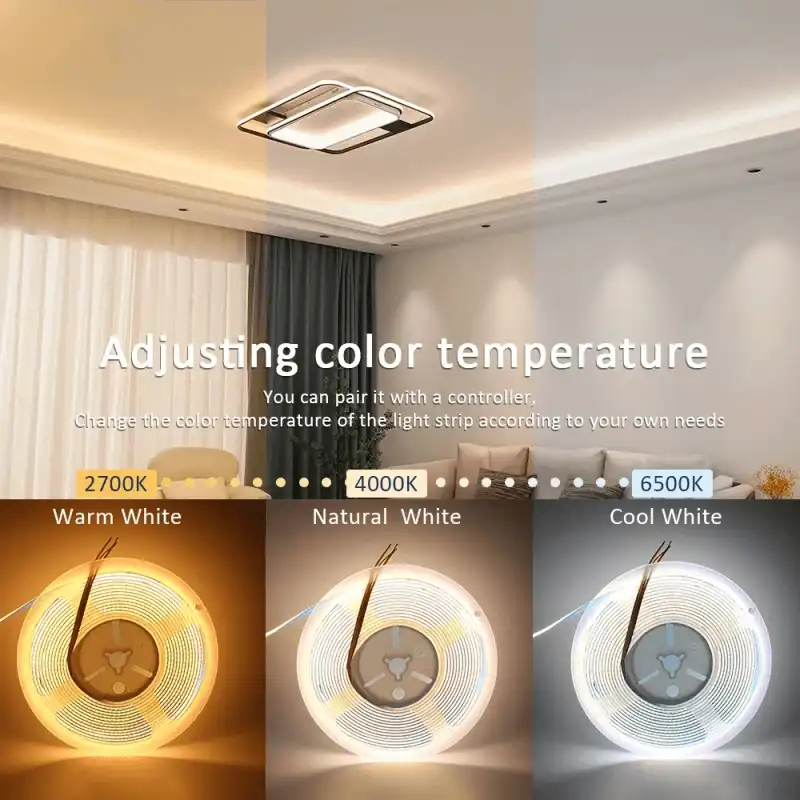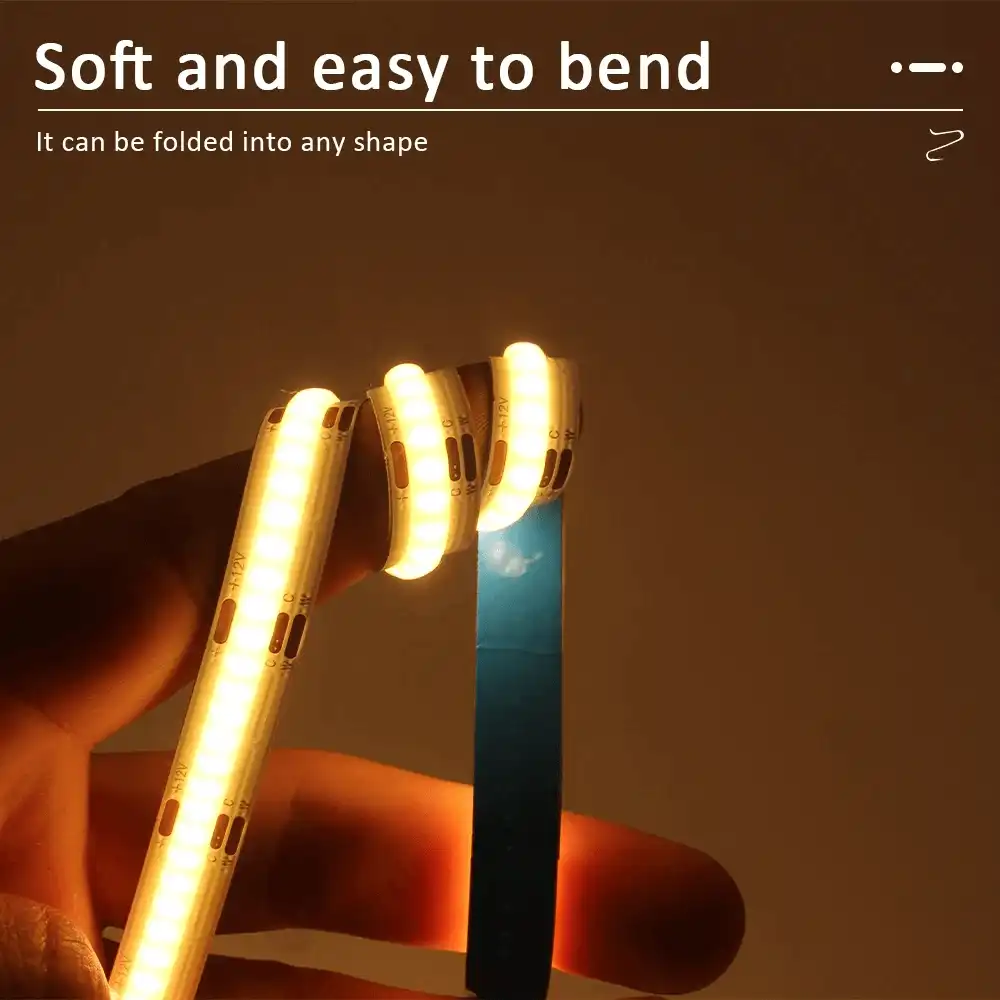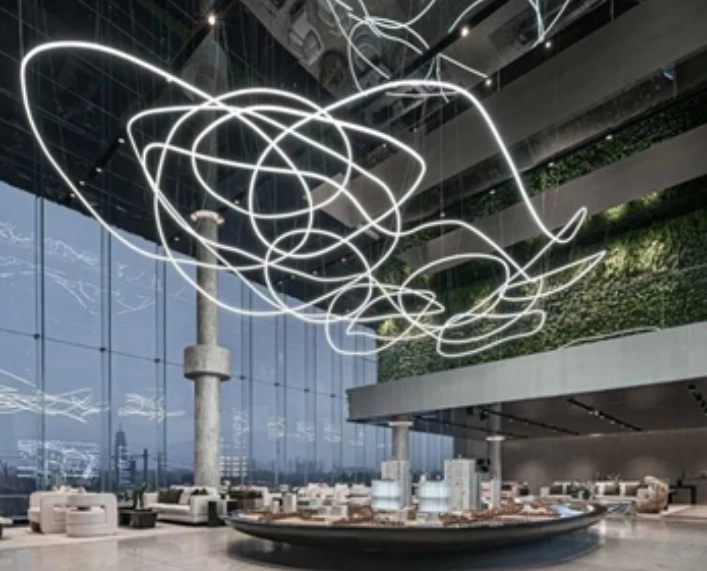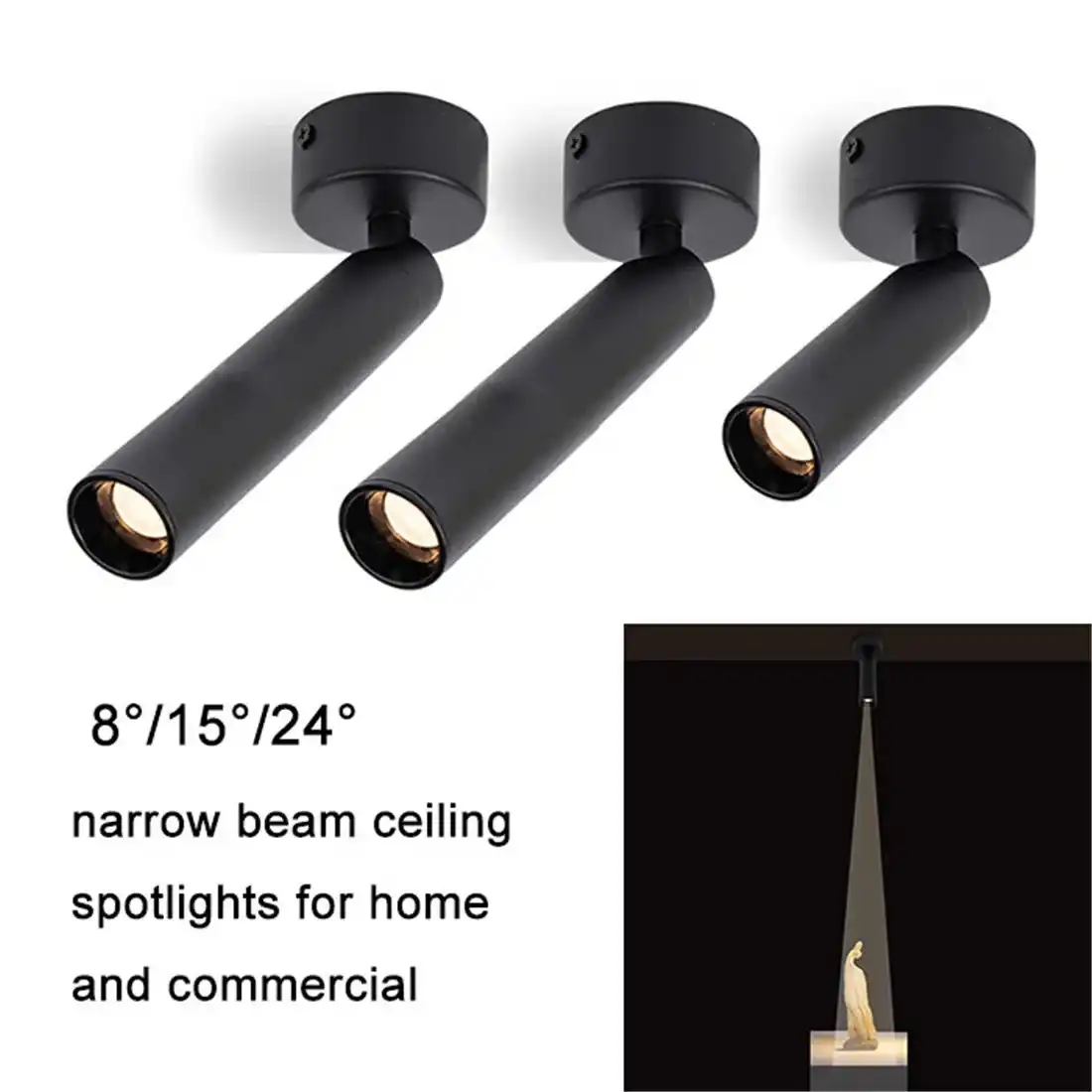LED Strip Light Ultimate Guide 2025 | Types, Setup & Tips
Welcome to the ultimate guide for LED strip lights in 2025! As lighting technology continues to evolve, LED strip lights have become increasingly popular for their versatility, energy efficiency, and aesthetic appeal. This comprehensive guide will walk you through the various types of LED strip lights, provide expert setup advice, and offer valuable tips to enhance your lighting experience. Whether you're a homeowner looking to upgrade your living space or a professional seeking the latest lighting solutions, this guide will equip you with the knowledge to make informed decisions and create stunning lighting designs.

Grasping LED Strip Light Technology
LED strip lights have revolutionized the lighting industry with their flexibility and efficiency. These thin, flexible circuit boards are populated with light-emitting diodes (LEDs) that produce bright, colorful illumination. The technology behind LED strip lights has advanced significantly in recent years, offering improved brightness, color accuracy, and energy efficiency.
Types of LED Strip Lights
There are several types of LED strip lights available in the market, each designed for specific applications and environments. The most common types include:
- Single Color LED Strips: These strips emit light in a single color, such as warm white, cool white, or a specific hue. They are ideal for accent lighting and creating a consistent ambiance.
- RGB LED Strips: RGB (Red, Green, Blue) strips can produce a wide range of colors by mixing these primary colors in various intensities. They offer versatility for mood lighting and dynamic effects.
- RGBW LED Strips: These strips add a dedicated white LED to the RGB configuration, allowing for more accurate color reproduction and better white light output.
- Addressable LED Strips: Each LED on these strips can be individually controlled, enabling complex patterns and animations. They are popular for creative lighting installations and interactive displays.
- High-Density LED Strips: These strips feature a higher number of LEDs per meter, resulting in brighter and more uniform lighting. They are often used in professional lighting applications.
Key Features to Consider
When selecting LED strip lights, it's essential to consider the following features:
- LED Density: The number of LEDs per meter affects the brightness and uniformity of the light output. Higher density strips provide more intense illumination.
- Color Temperature: Measured in Kelvin (K), color temperature determines the warmth or coolness of white light. Lower values (2700K-3000K) produce warm light, while higher values (5000K-6500K) result in cooler, daylight-like illumination.
- CRI (Color Rendering Index): This measure indicates how accurately the light source renders colors. A higher CRI (90+ is considered excellent) ensures that objects appear more natural under the light.
- IP Rating: The Ingress Protection (IP) rating indicates the strip's resistance to dust and water. Higher ratings (e.g., IP65, IP67) are suitable for outdoor or humid environments.
- Voltage: LED strips are available in different voltages, typically 12V or 24V. The choice depends on the installation requirements and the length of the strip.

Setting Up Your LED Strip Lights
Proper installation is crucial for maximizing the performance and longevity of your LED strip lights. Follow these steps to ensure a successful setup:
Planning Your Layout
Before installation, carefully plan your lighting layout. Consider the following factors:
- Measure the areas where you want to install the strips
- Determine the desired brightness and color options
- Identify power source locations and calculate the total power requirements
- Plan for any corners or curves in your installation path
Installation Process
- Surface Preparation: Clean the mounting surface thoroughly to ensure good adhesion.
- Cutting (if necessary): Most LED strips can be cut at designated points. Make clean cuts to avoid damaging the circuitry.
- Connecting Strips: Use appropriate connectors or solder joints to connect multiple strips or navigate corners.
- Power Connection: Connect the LED strip to a compatible power supply, ensuring proper voltage and current ratings.
- Controller Setup: If using a controller for color-changing or dimming functions, connect and configure it according to the manufacturer's instructions.
- Mounting: Peel off the adhesive backing and carefully apply the strip to the prepared surface, avoiding air bubbles or creases.
- Testing: Before finalizing the installation, test the LED strip to ensure all sections are functioning correctly.
Power Management
Proper power management is crucial for the performance and safety of your LED strip installation:
- Use a power supply with sufficient wattage to support your entire LED strip setup
- For longer runs, consider using multiple power injection points to maintain consistent brightness
- Implement a dimmer or controller to manage power consumption and extend the life of your LEDs

Tips for Enhancing Your LED Strip Light Experience
To get the most out of your LED strip lights, consider these expert tips:
Creative Applications
LED strip lights offer endless possibilities for creative lighting design:
- Indirect Lighting: Create a soft, ambient glow by installing strips behind furniture or along ceiling coves
- Task Lighting: Use strips under cabinets or shelves to illuminate work areas
- Accent Lighting: Highlight architectural features or artwork with strategically placed strips
- Outdoor Lighting: Enhance patios, decks, or gardens with weather-resistant LED strips
- Smart Home Integration: Connect your LED strips to smart home systems for voice control and automation
Maintenance and Longevity
Proper care can significantly extend the life of your LED strip lights:
- Regularly clean the strips with a soft, dry cloth to remove dust and debris
- Avoid exposing the strips to excessive heat or moisture
- Use surge protectors to safeguard against power fluctuations
- Operate the strips within their recommended voltage and current limits
Troubleshooting Common Issues
If you encounter problems with your LED strip lights, try these solutions:
- Uneven Brightness: Check for loose connections or consider adding power injection points
- Color Inconsistency: Ensure all strips are from the same batch or calibrate RGB values
- Flickering: Verify power supply compatibility and check for loose connections
- Premature Failure: Assess heat dissipation and ensure proper ventilation around the strips
Conclusion
LED strip lights offer a versatile and efficient lighting solution for both residential and commercial applications. By understanding the various types, mastering the setup process, and implementing creative ideas, you can transform any space with stunning illumination. As technology continues to advance, LED strip lights will undoubtedly play an increasingly important role in modern lighting design.
For more information on cutting-edge LED lighting solutions and expert advice, don't hesitate to contact USKYLED at sales@uskyled.com. Our team of lighting professionals is dedicated to helping you achieve your lighting goals with innovative products and personalized support.
References
1. Johnson, E. (2024). "The Evolution of LED Strip Lighting: 2025 Market Trends and Innovations." Lighting Technology Today, 18(3), 45-52.
2. Smith, A., & Brown, R. (2023). "Energy Efficiency in Modern Lighting: A Comprehensive Analysis of LED Strip Technologies." Journal of Sustainable Illumination, 7(2), 112-128.
3. Garcia, M. (2024). "Smart Home Integration: The Role of LED Strip Lights in IoT Ecosystems." Connected Living Quarterly, 9(4), 76-89.
4. Chen, L., & Wong, K. (2023). "Advancements in Color Rendering and Control Systems for LED Strip Lighting." International Journal of Lighting Research and Technology, 55(1), 23-37.
5. Thompson, D. (2024). "Commercial Applications of High-Density LED Strip Lights: Case Studies and Best Practices." Architectural Lighting Design, 12(2), 67-81.

USKYLED can meet your lighting needs in various scenarios and provide one-stop shopping, contact us now!

Why You Should Choose USKYLED?
![What is Dimmable Track Lighting for Museum: Best Guide [2025]](/icms/upload/0d08cc601e7611f0b542b3ca0c0f4a83/pic/knowledgemanager-knowledgepic/e7879f32605f11f081911f363b8c1ed0/Directory/20250717 dimmable track lighting -1(1)_1752739217941.webp)

